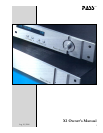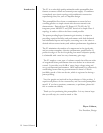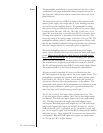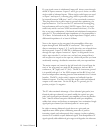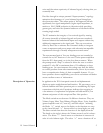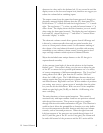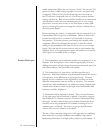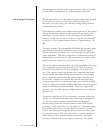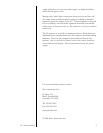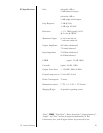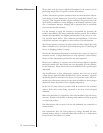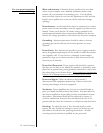
8
X1 Owner’s Manual
takes imagination and hard work to get as much of these as possible
at once without trading them off adversely against each other.
We recommend the use of the balanced output mode where possible.
It will retain the character of the input mode, but offers less
distortion, less noise, more gain, and more voltage swing, without
compromising the sound.
With balanced operation, the common mode rejection of the preamp
reflects the intrinsic common mode rejection of the topology, the
matching of the gain devices, and the matching of the attenuator
channels. In this case we have been able to keep the total mismatch
to about .1%, for a common mode rejection of approximately -60
dB.
The input system of the preamplifier will exhibit full common mode
noise rejection with passive balanced sources, where the negative
input is connected to ground at the source through the appropriate
source impedance. This allows adaptation of unbalanced sources to
balanced operation with passive cable connections in a manner that
achieves the noise rejection of active balanced sources.
The use of a micro-controller allows all of the preamplifier functions
to be repeatable and accurately controlled. The micro-processor
only controls the functions of the preamplifier. At no time does
any of the input or output signal come into contact with the digital
control signals. The digital circuits are powered by a power supply
that is completely separate from the analog supply. Should it ever
be necessary to update the software that controls the functioning
of the preamp only the socketed micro processor need be changed.
There is a single custom made shielded cable that connects the power
supply to the main preamplifier module. The power supply cable
does not carry any audio signals or digital clock lines and is filtered
against noise.
The power supply for the X1 is contained in a separate chassis and
consists of a toroidal power transformer delivering an unregulated
+/- 45 volts which is actively regulated before feeding passive
filtering which powers the constant current sources that bias the
gain stages. Each channel has its own regulation. The power supply
noise reaching the circuit is on the order of a microvolt, and the
little of that which gets through the circuit is rejected at the output
in a balanced system. The relays and control systems are regulated
independently from a separate toroidal transformer. All digital
circuitry is isolated in the power supply control unit. The power
Other Design Comments



